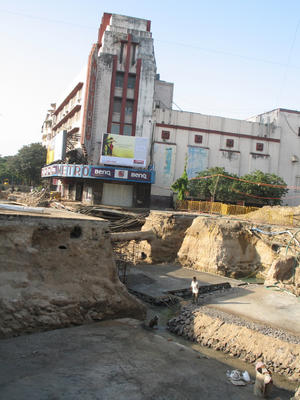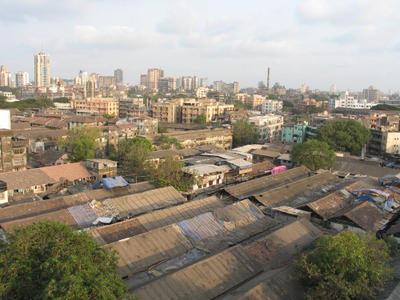Mumbai Mill-lands get a breather!
HC holds sales of mill lands by NTC contrary to BIFR, SC order
MUMBAI, OCT 17 (PTI) :In an important order, the Bombay High Court today held that all sales of surplus mi lands by National Textile Corporation (NTC) were contrary to sanctioned schemes of Board of Industrial and Financial Resconstruction (BIFR) and Supreme Court orders and hence not in conformity with development rules.
Hearing a petition filed by Bombay Environmental Action Group, the bench headed by Justice S Radhakrishnan directed the Maharashtra government to take remedial measures as the municipal body had abdicated all its responsibilities in regard to development of mill lands.
Interpreting amended development control (DC) rule 58, the court observed that "open land" would also include the land vacated after demolition and hence the sale of mill lands would come under the ambit of earlier DC rule which stipulates that one-third of saleable mill land would be earmarked for open space, one-third for government to set up low cost housing and the rest for mill owners benefit.
According to the petitioner, NTC has 25 textile mills spread over 285 acres in prime locations of the city, estimated to be over Rs 5000 crore. Of these, surplus land of five mills were sold in violation of DC rules and it was challenged in the High Court.
The court also held that all the constructions carried out by various developers were clearly in violation of Government Notification of July 7, 2004, as admittedly none of them have obtained clearance from Ministry of Environment and Forests. The judges held that all sales of Mill lands carried out by NTC were clearly contrary to the Supreme Court orders dated May 11, 2005 and September 27, 2002 and contrary to the sanctioned BIFR schemes.
"We are clearly of the view that the sale of lands by NTC from 5 mills -- Apollo Textile Mills, Mumbai Textile Mills, Elphinstone Mills, Kohinoor Mill No 3 and Jupiter Mills -- are clearly contrary to the sanctioned BIFR Scheme and both the orders of Supreme Court dated May 11, 2005 and September 27, 2002", the judges noted.
"We are constrained to observe that neither the Bombay Municipal Corporation nor the State of Maharashtra took any steps to ensure strict compliance of the notification issued by Ministry of Environment and Forests", the judges noted.
"Even the Maharashtra Pollution Control Board was lackadaisical in its approach for strict implementation of the above notification. Virtually all the above three Respondents had abdicated their legal obligations and duties in implementing the notification", the judges observed.
"The so called public hearing conducted by the Maharashtra Pollution Control Board, as per the notification was not at all satisfactory. Such a hearing must be held after a sufficient notice prominently published in newspapers with wide circulation," the bench remarked. "In view of the facts disclosed in this case and in view of the totally casual and lackadaisical approach by the Maharashtra Pollution Control Board, Bombay Municipal Corporation and State of Maharashtra, it would be just and proper if public hearings are conducted by the Ministry of Environment and Forests itself and not delegate to the State Pollution Control Board." The NTC urged for a stay of the High Court but the judges did not grant stay of their order. (ends)_
Want to know more about the mill lands?


